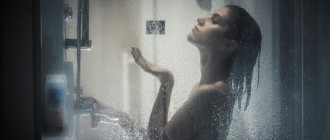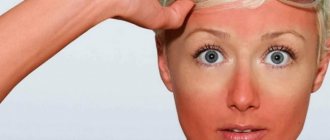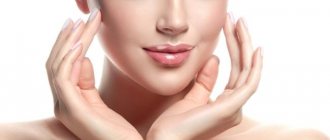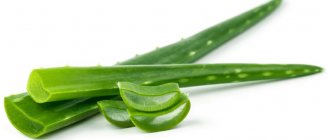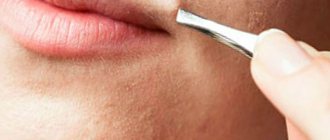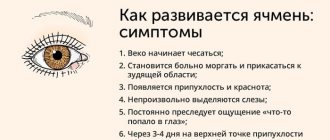A solarium is a horizontal or vertical platform for irradiation with light from ultraviolet lamps. Tinted glass, which is used in tanning salons, does not transmit the short-wave part of the UV spectrum, which poses a health hazard. But frequent tanning procedures sometimes lead to damage to the skin. A tanning burn is characterized by the destruction of cells in the superficial and deeper layers of the skin. Treatment methods depend on the area of damage and the depth of penetration of the rays into the soft tissue.
Why is ultraviolet burn dangerous?
Tanning bed burns occur due to increased sensitivity of the skin to UV radiation. This condition is called the photosensitivity effect. During sun exposure, the protein components of the skin are destroyed, and their breakdown products enter the bloodstream. Under the influence of rays, the functioning of internal organs is disrupted, and dangerous diseases arise:
- photodermatitis;
- depression of the functions of the central nervous system;
- increased fat metabolism;
- malignant tumors;
- clouding of the lens of the eye;
- conjunctivitis.
Frequent visits to solariums are fraught with cancer - melanoma, squamous cell carcinoma.
The first symptoms of a burn after a solarium
The clinical manifestations of sunburn are not much different from damage caused by UV rays from the sun. The severity of symptoms depends on the duration of the procedure and the frequency of visits to the solarium. Exposure to UV radiation increases the use of certain medications - antibiotics, hormonal agents, antipsychotics, herbal antidepressants. Substances that affect photosensitivity are even found in food products - greens, fresh vegetables, citrus fruits.
It is advisable for anyone who goes to a solarium to visit a doctor and get the necessary advice from a dermatologist or cosmetologist. Such actions will certainly help prevent troubles in the future.
People with fair skin types are more susceptible to radiation injuries. This is due to the low amount of melanin in the body, which protects the skin from aggressive UV radiation. The primary manifestations of a burn from tanning include:
- redness and peeling of the skin;
- moderate to severe itching;
- swelling;
- local temperature increase;
- headache;
- weakness;
- nausea.
Redness after tanning indicates the destruction of cells in the stratum corneum of the epidermis. The retina of the eye also suffers from bright UV radiation. With frequent sun exposure, patients complain of:
- conjunctival irritation;
- burning;
- lacrimation;
- photophobia;
- swelling of the eyelids;
- pain when touched, etc.
In isolated cases, hemorrhages occur in the eyeball, leading to damage and detachment of the retina. This is fraught with decreased visual acuity, partial blindness, and infectious inflammation.
In 86% of cases, people get superficial burns of 1st and 2nd degree in a solarium. If the cells of the germ layer of the skin are destroyed, bubbles with a clear liquid form on the body. Healing occurs within 1.5-2 weeks subject to adequate treatment.
How liquid vitamin E protects against burns
Vitamin E is fat soluble. Therefore, its solution is made in oil.
However, it can be found in real oil. One of the most common vitamins that helps maintain youth, serves as an antioxidant, promotes wound healing, and more, is vitamin E.
The benefits of this vitamin are quite multifaceted. Accordingly, it is used in various fields, from cosmetology to food intake.
For example, it is found in sunflower and olive oil. So, in sunflower oil the amount of vitamin is 30 g, and in olive oil – 100 g. On average, a person needs to consume 15 mg of vitamin E per day. In addition, it can be applied to the affected areas of the skin, so if you burn your face while using a mini-tanning bed, quickly apply Solgar to it.
What to do if you are burned in a solarium: first aid
Burns after solarium are dangerous due to a general deterioration in well-being. This occurs due to poisoning by protein breakdown products contained in the skin. In case of extensive injuries, the victim is provided with emergency care using anti-burn and painkillers. Timely treatment of injured tissue prevents deepening of the wound and complications.
Skin damage
At the first sign of a burn, you must:
- Cool damaged skin areas. Cold showers keep tissues cool. To wash off the remnants of tanning cosmetics, use a hypoallergenic gel or tar soap.
- Take painkillers. In case of a severe burn, the victim is given non-narcotic analgesics with antipyretic and anti-inflammatory properties - Nurofen, Ibuklin, Ketanov.
- Treat lesions. The burn will go away faster if you treat the injured tissue with anti-burn ointments - Panthenol, Solcoseryl, Bepanten, Dexpanthenol. In the absence of medications, use moisturizing lotions or body milk. Complete healing will occur within 1-2 weeks.
- Apply a bandage. If blisters form, the damaged tissue is covered with a sterile bandage. Antiseptic ointments are applied under it - Miramistin, Levomekol.
For symptoms of poisoning, provide plenty of alkaline drink - mineral water, milk. If your health does not improve within 20-25 minutes, you should consult a doctor.
Eye damage
To protect your eyes in a solarium, you must wear safety glasses. In their absence, the risk of thermal burns to the eyes increases. Injury is indicated by lacrimation, swelling of the eyelids, and pain. At the first symptoms of a burn you need to:
- Rinse the conjunctiva. The eyes are washed under running water for 10-15 minutes to reduce the thermal effects of ultraviolet radiation.
- Anesthesia. To relieve pain, local anesthetic eye medications - Dicain, Alcain, Inocain - are instilled into the corners of the eyes. As an alternative, use the ophthalmic gel Korneregel.
- Disinfection. To prevent infectious inflammation of the mucous membrane, disinfectants are instilled - Okomistin, Albucid.
- Applying a bandage. Finally, apply a sterile dressing.
Treatment of radiation injury to the eyes
Mucous membranes are most sensitive to burns. To prevent eye damage, doctors recommend wearing special glasses when visiting a solarium. If damage occurs, symptoms appear a couple of hours after the procedure. The following symptoms appear:
- increased lacrimation;
- redness of the cornea and skin around the eyes;
- swelling of tissues;
- impossible to look at the light;
- pain syndrome.
Any of the symptoms should alert a person. When they appear, stop exposure to ultraviolet radiation so as not to provoke further development of the lesion.
First aid for eye burns includes cooling compresses. Anesthetic drops, for example Lidocaine or Novocaine, are also instilled onto the mucous membranes. Do not self-medicate, as eye injuries can lead to serious consequences, including loss of vision.
The recovery course is determined by the attending physician. In most cases, the list of prescribed drugs includes Octilium and Indocollir drops. They relieve inflammation and reduce pain. Additionally, wash the eyes with chilled decoctions of chamomile or calendula.
When visiting a solarium, take precautions. Do not spend a lot of time under ultraviolet rays, always protect your skin and use special eye glasses. Otherwise, there is a risk of getting a burn to the skin or mucous membranes, which requires a long recovery.
A solarium burn is damage to the epidermis and dermis due to intense ultraviolet radiation. The complex of therapeutic actions is based on minimizing pain and inflammatory processes, which can cause the development of infections.
Further therapy
Before treating radiation injuries with pharmaceutical drugs, you need to assess the condition of the skin. For 1st and 2nd degree burns, local therapy with the use of antiseptic, wound healing and anti-inflammatory agents is limited.
In case of a burn after a solarium, folk recipes are permissible for use only if the skin damage is minor and the general condition is normal. If blisters form and body temperature rises, you should resort to drug therapy.
Treatment of eye burns after visiting a solarium is carried out in the ophthalmology department. To restore the mucous membrane, tear fluid substitutes are used. To prevent purulent complications, antibacterial agents are used.
Drugs from the pharmacy
If the skin is damaged after solarium, anti-burn ointments, sprays and gels are used, which have the following effect:
- antiseptic;
- anti-inflammatory;
- pain reliever;
- wound healing.
Timely local therapy stimulates the healing of injured tissues and prevents bacterial and fungal inflammation. The treatment regimen includes the following medications for burns:
- Panthenol is an aerosol with provitamin B5, which has a wound-healing effect in case of radiation injuries after solarium. Accelerates metabolism in the skin, stimulates tissue scarring.
- Furacilin ointment is an anti-inflammatory and antimicrobial drug that prevents purulent inflammation. Prescribed for 2nd degree burns and infected wounds.
- Rescuer is an effective remedy for superficial burns with regenerating and softening properties. A protective layer is formed on the surface of the skin, which protects against pathogens and dehydration.
- Actovegin is a gel based on hemoderivative from cattle blood, which has pronounced regenerating properties. Heals tissue from burn wounds from solariums.
- Eplan is a cream with bactericidal, analgesic and wound-healing effects. Used for thermal and radiation burns. Reduces the severity of symptoms of photodermatitis, protects the skin from further exposure to UV rays.
With 2nd degree burns, the risk of infectious inflammation of the injured skin increases. Local antimicrobial drugs are used to treat purulent wounds:
- Streptocide is an antibiotic from the sulfonamide group that destroys coccal flora. Used for radiation injuries complicated by pyoderma and purulent inflammation.
- Tetracycline ointment is a drug from the tetracycline group that destroys staphylococci, streptococci, and some viruses. Used for relatively minor thermal and radiation burns.
- Baneocin is a combined antibiotic in powder form that kills most pyogenic bacteria. Prescribed for infected skin injuries and non-healing ulcers.
In case of eye injury, treatment is carried out in a hospital. In the first few hours after solarium, the lacrimal ducts are washed with saline to remove pathogens and decay products of soft tissues. To prevent dangerous complications, antitetanus serum is administered.
Radiation eye injuries are treated with antibacterial and analgesic ointments:
- Ofloxacin;
- Tobrex;
- Erythromycin ointment;
- Demazol.
To prevent the formation of adhesions in the retina, anti-inflammatory and regenerating drugs are prescribed. Ointments are placed behind the eyelid that accelerate the healing of the cornea - Adgelon, Glekomen, Korneregel, etc. For severe injuries, glucocorticosteroids are used - Betamethasone, Dexamethasone.
Folk remedies
A facial burn after a tanning bed is fraught with puffiness, severe redness, and scarring. To prevent these symptoms, use alternative medicine:
- Potato. The potatoes are peeled and grated. The paste is applied to injured skin for 15-20 minutes.
- Green tea. 1 tsp. tea leaves are poured with 100 ml of boiling water and infused for 30 minutes. Moisten gauze in the strained liquid and apply it to the burns for 10 minutes three times a day.
Dermatologists advise using folk remedies only for superficial burns that are not accompanied by blisters.
What is prohibited to do
Experts identify a number of limitations that must be taken into account when treating radiation injuries after solariums:
- You should not sunbathe or go to a solarium for 2 weeks;
- for eye injuries, treatment with folk remedies is not suitable;
- Do not pierce blisters with needles or treat them with vegetable oil;
- It is forbidden to rinse the mucous membranes of the eyes with running water or tea.
For weeping wounds, do not apply fermented milk products to the skin, and do not sprinkle starch or flour on the burns. Such actions only aggravate the condition and provoke bacterial inflammation.
Treatment methods
If a visit to a beauty salon ends with redness, you should treat irritated skin in stages. First, take a cool shower, apply natural vegetable oil, which is washed off after 30 minutes with water. After this, the body is treated with a moisturizing skin nourishing product in the form of milk, lotion or cream.
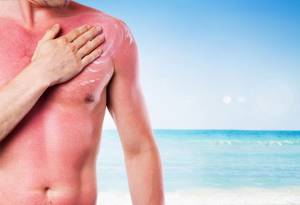
Facial burns in a solarium (radiation radiation) are far from uncommon. First, the upper layers of the epidermis are damaged, the recovery of which takes up to 7 days. Further, the formation of blisters may occur, which indicates deep tissue destruction. To relieve inflammation of the eyelids and eyes, apply a mask of kefir, sour cream or fresh grated cucumber. The face responds well to taking a warm bath with chamomile infusion.
For whom is solarium contraindicated?
Tanning salons use lamps that generate intense ultraviolet radiation. It is strictly not recommended to go to the solarium if:
- vitiligo;
- mastopathy;
- pulmonary tuberculosis;
- age spots;
- bronchial asthma;
- menstruation;
- pregnancy;
- vascular atherosclerosis;
- thyroid dysfunction;
- bacterial skin inflammation;
- increased intraocular pressure;
- chronic dermatitis.
The procedure is contraindicated for people with a predisposition to cancer and with numerous moles on the body.
Precautions when visiting a solarium
When visiting the solarium for the first time, it is recommended to sunbathe for no more than 4-5 minutes. The maximum duration of insolation is 20 minutes. To prevent burns, it is recommended:
- protect your eyes from solarium with glasses with UV filters;
- treat the skin with tanning creams;
- stop taking antibiotics and antipsychotics a week before the procedure.
The session time is increased gradually. A few extra minutes in the solarium can cause skin damage. How many days a burn lasts depends on the duration of exposure to UV rays and skin type. For superficial injuries, complete recovery occurs in 5-7 days.
Causes and degrees of skin damage
The skin, and especially the facial area, is susceptible to UV rays and injury. A burn after a tanning bed can occur for the following reasons:
- Allergic reaction to ultraviolet light.
- Sensitivity to cosmetics used in the centers.
- Exceeding the required session time.
- Unprepared skin, which is actively exposed to ultraviolet rays.
A burn after a solarium can be in two stages:
- The injuries are shallow, characterized by moderate pain, redness, slight swelling, affect the upper layers of the epidermis, and heal after 3-5 days.
- The appearance of blisters on the skin indicates severe damage. Complete cure is possible after 10-14 days.
